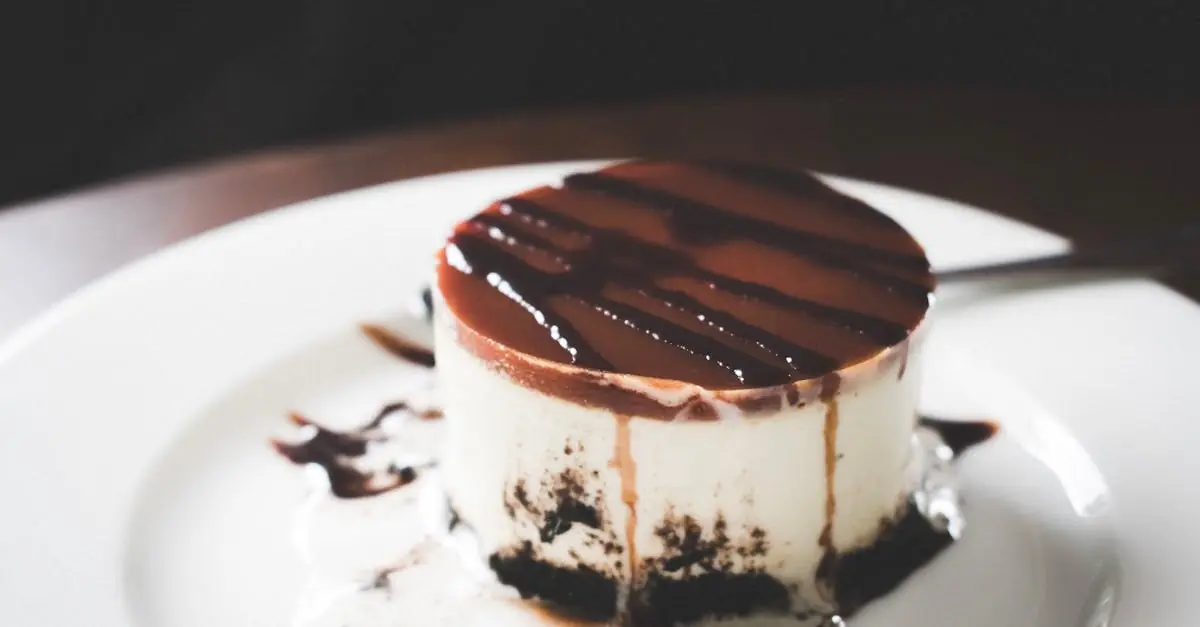When it comes to baking, the right dish can make all the difference. Enter the oval baking dish, the unsung hero of every kitchen. This versatile gem isn’t just for casseroles; it’s perfect for everything from lasagna to roasted veggies. If you thought oval shapes were just for eggs and fancy mirrors, think again.
Imagine impressing your friends at dinner parties while secretly knowing your secret weapon is a humble oval baking dish. It’s like the Swiss Army knife of bakeware—stylish, functional, and ready to tackle any culinary challenge. So why settle for boring square or round dishes when you can elevate your cooking game with this charming kitchen staple? Let’s dive into why the oval baking dish deserves a prime spot in your kitchen arsenal.
Table of Contents
ToggleOverview of Oval Baking Dishes
Oval baking dishes offer versatility in meal preparation. Their unique shape allows for efficient cooking and beautiful presentation. Often crafted from materials like ceramic, glass, or stoneware, these dishes withstand high temperatures while promoting even heat distribution.
Size options vary, accommodating everything from intimate dinners to large gatherings. Designers often include features such as handles for easy transport. Non-stick coatings can enhance convenience, making serving effortless and minimizing cleanup.
Recipes for oval baking dishes extend beyond the traditional casserole. Lasagna cooks to perfection, and roasted vegetables develop a delightful caramelization. Baked desserts, including cobblers and gratins, also shine in this style of dish.
Choosing the right oval baking dish can enhance cooking experiences. Selecting one with a lid adds versatility, allowing for both baking and storage. Color and design options further personalize the kitchen experience while elevating table settings.
Users often find that oval shapes lend themselves to elegant dishing for guests. Using these dishes can impress, making them an essential kitchen tool.
Types of Oval Baking Dishes
Oval baking dishes come in various materials and sizes, each serving distinct cooking needs and preferences.
Material Options
Ceramic is a popular choice, offering excellent heat retention and an attractive appearance. Glass provides visibility during cooking, allowing for easy monitoring of food. Stoneware is known for its durability and ability to withstand high temperatures, making it ideal for longer baking sessions. Cast iron offers unparalleled heat distribution, perfect for achieving a crispy texture on the outside while keeping the inside moist. Non-stick coatings enhance food release, simplifying cleanup and serving. Each material caters to specific cooking techniques, ensuring versatility in the kitchen.
Size Variations
Oval baking dishes vary significantly in size, accommodating different recipes and serving needs. Small dishes typically serve 2 to 4 people, suitable for personal casseroles or baked desserts. Medium options serve 4 to 8 individuals, perfect for family gatherings or potlucks. Large dishes, designed for 8 or more servings, work well for entertaining guests with generous portions of lasagna or roasted vegetables. Popular sizes include 1.5-quart, 3-quart, and 5-quart configurations, allowing chefs to choose the ideal dish for any occasion. A diverse range of sizes ensures that home cooks can find the perfect dish for every recipe.
Benefits of Using Oval Baking Dishes
Oval baking dishes offer multiple advantages in the kitchen, enhancing both cooking and serving experiences. Their shape promotes even cooking and allows for diverse culinary uses.
Even Cooking
Even cooking happens through the oval design. Heat radiates efficiently around the dish, ensuring that all ingredients cook uniformly. Dishes made from materials like ceramic and glass retain heat effectively, promoting consistent results. Guests enjoy perfectly baked casseroles, lasagna, and roasted vegetables without cold spots. It’s easier to achieve golden-brown edges while maintaining moist interiors with oval shapes. Choosing an oval baking dish guarantees that meals come out evenly cooked, leading to a better dining experience.
Versatile Use
Versatile use characterizes oval baking dishes, making them suitable for a variety of recipes. Beyond casseroles, home cooks can create baked pastas, savory gratins, and even desserts like fruit cobblers. Dishes accommodate main courses, sides, or desserts, allowing for seamless meal preparation. Serving from an oval baking dish adds elegance to the table, impressing guests during gatherings. Furthermore, many models include features like handles, enhancing transportability between the kitchen and dining area. The versatility of oval baking dishes not only simplifies cooking but also elevates the overall dining experience.
How to Choose the Right Oval Baking Dish
Selecting the perfect oval baking dish involves weighing various factors, from materials to size. Making informed choices ensures optimal cooking experiences.
Considerations for Material
Ceramic baking dishes excel at heat retention and offer beautiful designs. Glass dishes provide visibility, allowing cooks to monitor their food without opening the oven. Stoneware provides durability and withstands high temperatures, making it ideal for savory recipes. Cast iron offers superior heat distribution, perfect for slow-cooked meals. Choosing the right material impacts cooking techniques and enhances the overall baking outcome.
Size and Shape Factors
Size variations cater to different gatherings, ensuring ample servings. Small dishes typically accommodate 2 to 4 people, while medium dishes suit 4 to 8. Large dishes often serve 8 or more, perfect for family gatherings or dinner parties. Shape plays a crucial role in cooking efficiency; oval forms promote even heat distribution and allow for attractive presentations. Matching dish size to meal requirements enhances the cooking experience, ensuring satisfaction for all diners.
Care and Maintenance Tips
Cleaning oval baking dishes requires attention to material type. For ceramic and stoneware dishes, a gentle sponge with mild detergent suffices. Avoid abrasive pads that can scratch the surface and diminish the dish’s quality. Glass dishes typically permit dishwasher use, but handwashing preserves clarity.
Storing oval baking dishes necessitates careful stacking. Preventing scratches involves placing a cloth or paper towel between dishes. Protecting handles ensures ease of use in the future.
Seasoning cast iron oval baking dishes enhances performance. The method includes applying a thin layer of cooking oil and heating it to create a non-stick surface. Regular conditioning maintains functionality and prevents rust.
Maintaining non-stick coatings demands caution. Using silicone or wooden utensils assists in avoiding scratches. For tough stains, soaking the dish in warm, soapy water loosens residue while safeguarding the finish.
Inspecting for cracks and chips regularly contributes to the dish’s longevity. Addressing small imperfections promptly prevents further damage. Discarding heavily damaged dishes ensures safety during cooking.
Keeping oval baking dishes away from extreme temperature changes prevents thermal shock. Gradual temperature adjustments lead to better durability. Utilizing oven mitts not only protects hands but also extends the life of the dish.
Following these care and maintenance tips preserves the functionality and appearance of oval baking dishes, ensuring they remain a staple in the kitchen for years.
The oval baking dish stands out as an essential kitchen tool that enhances both cooking and presentation. Its unique shape and versatile design allow for a wide range of recipes while ensuring even heat distribution. Whether it’s for a cozy family dinner or an elegant gathering, this dish elevates any meal.
With various materials and sizes available, home cooks can easily find the perfect oval baking dish to suit their needs. Proper care and maintenance ensure longevity, making it a worthwhile investment. Embracing the oval baking dish not only transforms culinary experiences but also adds a touch of style to the dining table.







